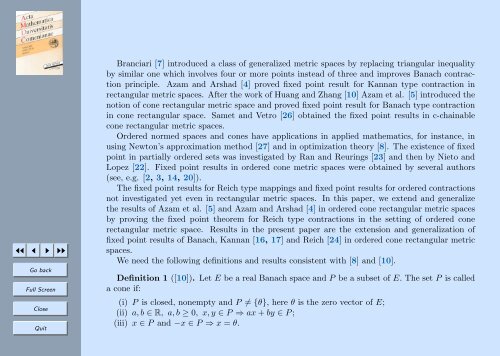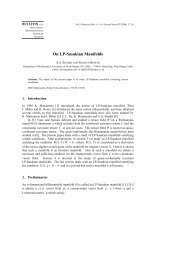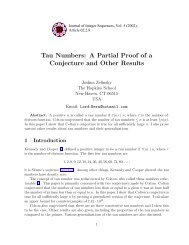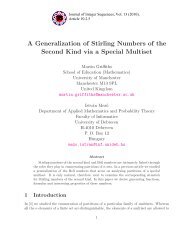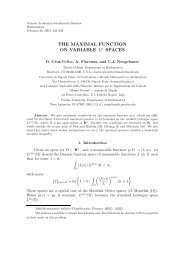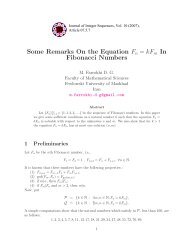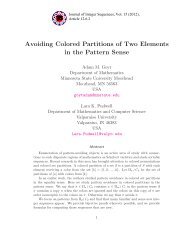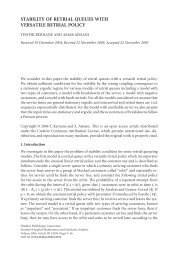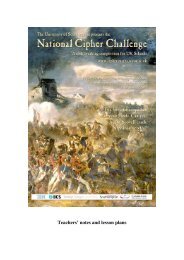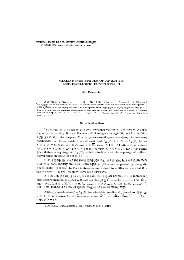SOME FIXED POINT THEOREMS FOR ORDERED REICH TYPE ...
SOME FIXED POINT THEOREMS FOR ORDERED REICH TYPE ...
SOME FIXED POINT THEOREMS FOR ORDERED REICH TYPE ...
Create successful ePaper yourself
Turn your PDF publications into a flip-book with our unique Google optimized e-Paper software.
◭◭ ◭ ◮ ◮◮Go backFull ScreenCloseQuitBranciari [7] introduced a class of generalized metric spaces by replacing triangular inequalityby similar one which involves four or more points instead of three and improves Banach contractionprinciple. Azam and Arshad [4] proved fixed point result for Kannan type contraction inrectangular metric spaces. After the work of Huang and Zhang [10] Azam et al. [5] introduced thenotion of cone rectangular metric space and proved fixed point result for Banach type contractionin cone rectangular space. Samet and Vetro [26] obtained the fixed point results in c-chainablecone rectangular metric spaces.Ordered normed spaces and cones have applications in applied mathematics, for instance, inusing Newton’s approximation method [27] and in optimization theory [8]. The existence of fixedpoint in partially ordered sets was investigated by Ran and Reurings [23] and then by Nieto andLopez [22]. Fixed point results in ordered cone metric spaces were obtained by several authors(see, e.g. [2, 3, 14, 20]).The fixed point results for Reich type mappings and fixed point results for ordered contractionsnot investigated yet even in rectangular metric spaces. In this paper, we extend and generalizethe results of Azam et al. [5] and Azam and Arshad [4] in ordered cone rectangular metric spacesby proving the fixed point theorem for Reich type contractions in the setting of ordered conerectangular metric space. Results in the present paper are the extension and generalization offixed point results of Banach, Kannan [16, 17] and Reich [24] in ordered cone rectangular metricspaces.We need the following definitions and results consistent with [8] and [10].Definition 1 ([10]). Let E be a real Banach space and P be a subset of E. The set P is calleda cone if:(i) P is closed, nonempty and P ≠ {θ}, here θ is the zero vector of E;(ii) a, b ∈ R, a, b ≥ 0, x, y ∈ P ⇒ ax + by ∈ P ;(iii) x ∈ P and −x ∈ P ⇒ x = θ.


